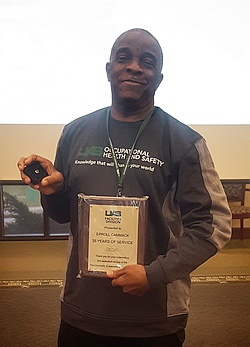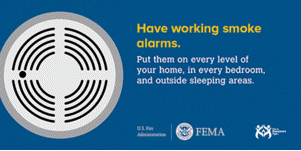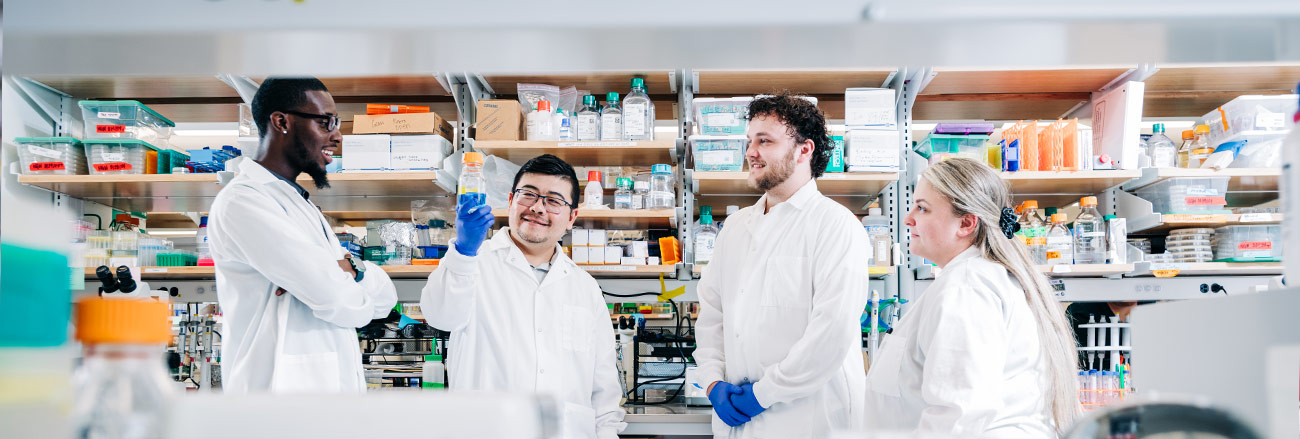Celebrating 35 Years
Published Date: Apr 02
 EHS proudly recognizes Mr. Erroll Cammack and his 35 years of service at UAB. He first came to UAB in 1982 when there were only two people in his department. Mr. Cammack said a lot has changed over the years from having to call for packages and waste pickup to having a more automated system today. Additionally, he said diversity has grown as well over the years.
EHS proudly recognizes Mr. Erroll Cammack and his 35 years of service at UAB. He first came to UAB in 1982 when there were only two people in his department. Mr. Cammack said a lot has changed over the years from having to call for packages and waste pickup to having a more automated system today. Additionally, he said diversity has grown as well over the years.
"I love my job...the last 34 years have been amazing and I have come to learn things and meet new people. This job has meant everything to me and I am grateful to have 35 years with a great company like UAB."
Thank you for your service, commitment, and dedication to UAB and the success of its mission and vision.
 EHS proudly recognizes Mr. Erroll Cammack and his 35 years of service at UAB. He first came to UAB in 1982 when there were only two people in his department. Mr. Cammack said a lot has changed over the years from having to call for packages and waste pickup to having a more automated system today. Additionally, he said diversity has grown as well over the years.
EHS proudly recognizes Mr. Erroll Cammack and his 35 years of service at UAB. He first came to UAB in 1982 when there were only two people in his department. Mr. Cammack said a lot has changed over the years from having to call for packages and waste pickup to having a more automated system today. Additionally, he said diversity has grown as well over the years. "I love my job...the last 34 years have been amazing and I have come to learn things and meet new people. This job has meant everything to me and I am grateful to have 35 years with a great company like UAB."
Thank you for your service, commitment, and dedication to UAB and the success of its mission and vision.
Change Clocks & Test Alarms for Daylight Saving Time
Published Date: Mar 06
 It is almost time to spring forward for Daylight Saving Time (DST).
It is almost time to spring forward for Daylight Saving Time (DST).
When setting your clock ahead one hour for DST Sunday, March 11, make sure your smoke alarms are working, and check that the batteries have plenty of charge. It is also a great time to check the expiration dates of your emergency supplies.
Read more
 It is almost time to spring forward for Daylight Saving Time (DST).
It is almost time to spring forward for Daylight Saving Time (DST).When setting your clock ahead one hour for DST Sunday, March 11, make sure your smoke alarms are working, and check that the batteries have plenty of charge. It is also a great time to check the expiration dates of your emergency supplies.
Read more
2018 Severe Weather Awareness Week
Published Date: Feb 19
Governor Kay Ivey has declared February 18-23, 2018, as Severe Weather Awareness Week in Alabama. Advance planning and increased awareness can help you survive these deadly storms.
Severe weather can develop quickly. When severe weather develops and warnings are issued take immediate actions to protect yourself and others.
Read more
Severe weather can develop quickly. When severe weather develops and warnings are issued take immediate actions to protect yourself and others.
Read more
